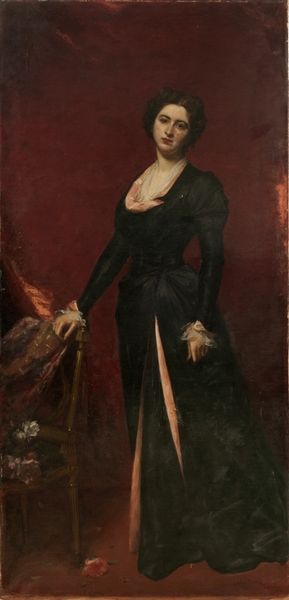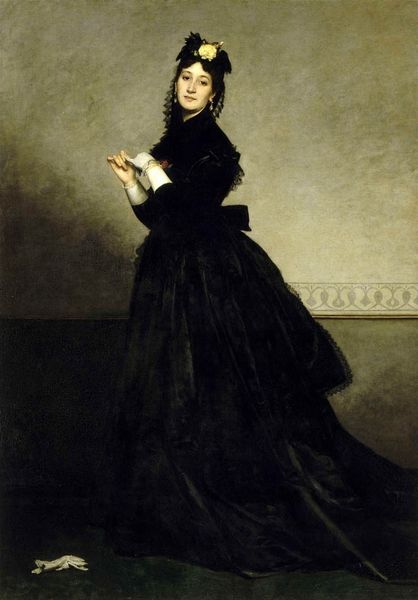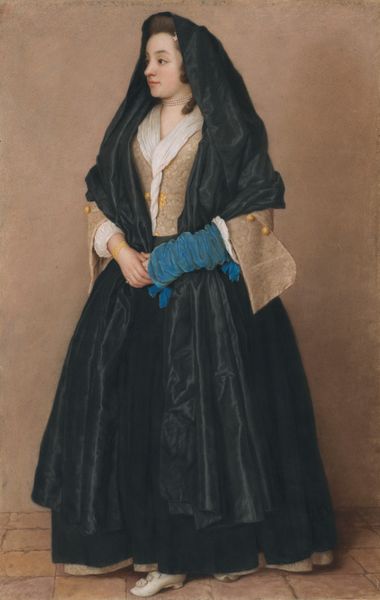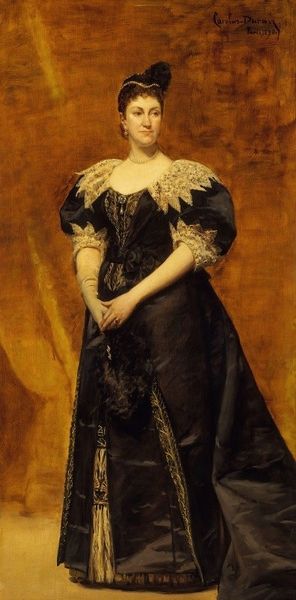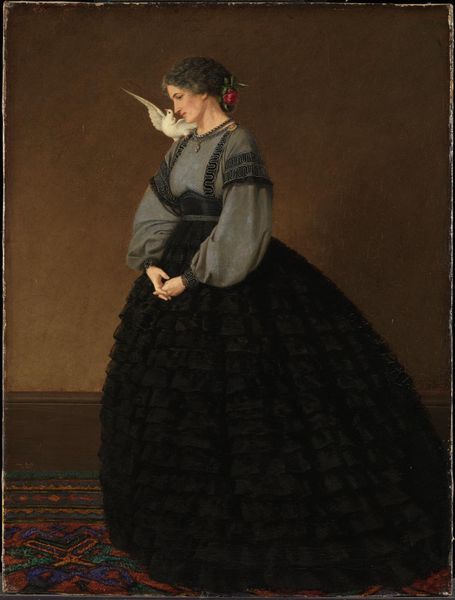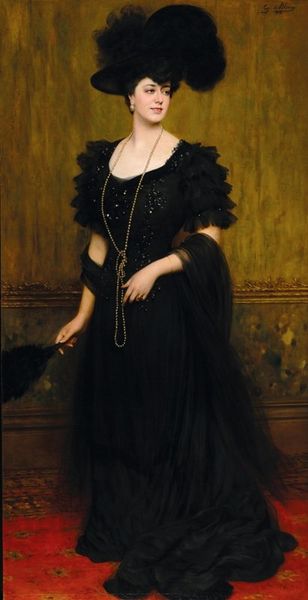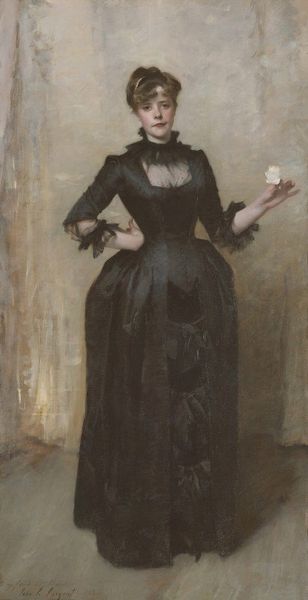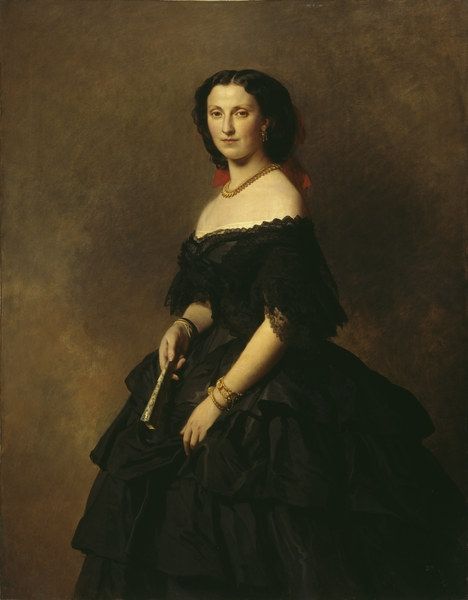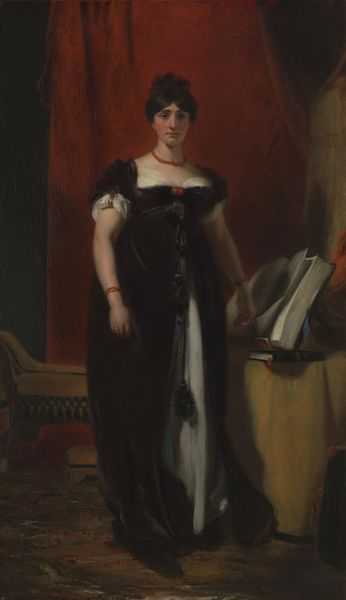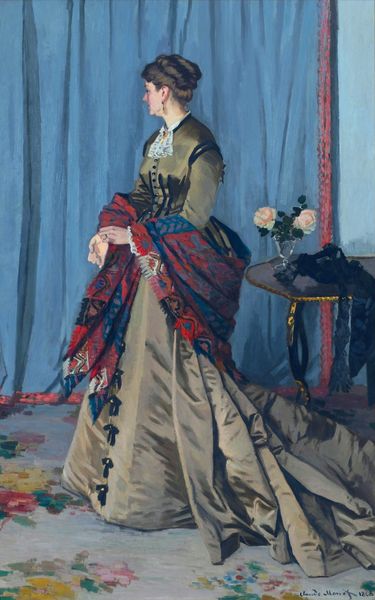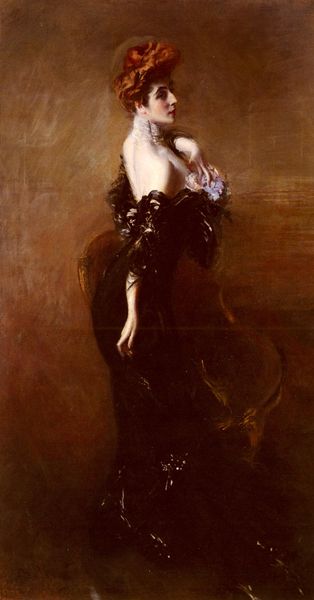
painting, oil-paint
#
portrait
#
painting
#
oil-paint
#
genre-painting
#
academic-art
#
surrealist
#
portrait art
#
fine art portrait
#
realism
Copyright: Public domain
Editor: We’re looking at Raimundo de Madrazo’s "Mrs. Rosario Falco, Countess of Siruela," an oil on canvas painted in 1881. The contrast between the Countess's black dress and the blue backdrop gives the piece a strikingly elegant yet somber feel. What formal elements strike you most when you view this painting? Curator: The masterful control of light is key. Observe how Madrazo utilizes chiaroscuro, bathing the Countess's face and hands in soft light, which starkly contrasts with the deep, velvety black of her gown. The textural rendering, the way he suggests the different qualities of velvet, silk, and lace through varied brushstrokes, is technically brilliant. Note too the considered placement of the red flower, a visual punctuation mark that disrupts the monochromatic scheme and draws the eye. What function does the artist deploy here to draw in the viewer? Editor: So the textural variation and the deliberate placement of that single red accent is meant to direct our eyes? I never would have thought of it like that, focusing purely on the forms instead. I see the textural complexity now that you’ve mentioned it and appreciate the artist’s intent even more. Curator: Precisely. The composition, while seemingly straightforward, is carefully constructed. The subtle asymmetry introduced by the drapery on the left creates a dynamic tension. It prevents the portrait from becoming static. What do you make of the gaze and her facial features in combination? Editor: Her face feels kind of passive or vacant. I initially interpreted it as realism but perhaps her stoic gaze works to emphasize her noble rank. Curator: That is true. Although perhaps that emotional vacancy is due to the lack of complexity that emerges from academic portraiture in painting. Overall, I now see the work beyond realism, looking at the forms and color at its surface.
Comments
No comments
Be the first to comment and join the conversation on the ultimate creative platform.
